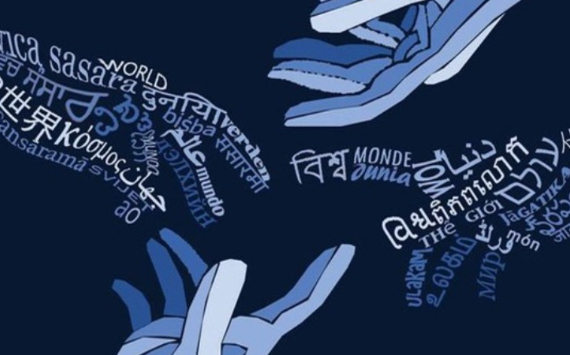Mother Language Day

Every year on February 21st, the world celebrates International Mother Language Day, a day dedicated to promoting linguistic and cultural diversity and multilingualism. This day reminds us of the importance of preserving and protecting all languages used by peoples around the globe.
About the holiday
Brief History
International Mother Language Day was established in 1999 during the 30th session of the UNESCO General Conference. The celebration was officially added to the global calendar in 2000. The United Nations endorsed the creation of this new observance and called on nations to support the preservation of the world's languages. The holiday is rooted in historical events: on February 21, 1952, Bengali students courageously defended their native language against armed police forces.
At that time, Bangladesh was part of Pakistan. Although Bengali was the predominant language in the region, the authorities had established Urdu as the official state language. On February 21, students from Dhaka University took to the streets demanding the recognition of Bengali as the state language. The police opened fire on the protesters, resulting in several deaths. This incident sparked widespread outrage and further protests, eventually leading to Bengali being granted official language status a few years later. The country later gained independence.
In remembrance of these events (and notably, at the initiative of representatives from Bangladesh), a new date was added to the international calendar.
How Is It Celebrated?
On this day, UNESCO will host celebrations and presentations. For instance, on February 21, 2019, after the opening ceremony at the organization’s headquarters, guests participated in linguistic debates, while in 2020, there was a roundtable discussion conducted in Swahili.
Across various countries and cities, local activities will also take place. Libraries and educational institutions will organize themed discussions, poetry readings, and open house events. Universities will invite students from different countries to share their cultures and perform songs in their native languages. Additionally, interactive activities such as games, quizzes, roundtable discussions, workshops, and linguistic quests will be arranged.
 Mother Language Day
Mother Language Day
Interesting Facts
- So, way back in 1999, UNESCO was like, "Let's make a special day to celebrate all languages." But why February 21? It's all because of a bold move in Bangladesh in 1952. Some brave students in Dhaka were all in for making Bangla a national language, and they didn't back down, even when things got really tough. This day is a tribute to their courage and a worldwide nudge to say, "Hey, every language matters."
- It's a wakeup call to remember that languages are more than just words; they're the soul of diverse cultures, histories, and identities. Plus, they're the keys to understanding each other in this global get-together we call Earth.
- Mother Language Day is a poignant reminder of the 1952 Bengali Language Movement, which was pivotal in securing Bengali as a state language in Bangladesh. This movement highlighted the struggles for linguistic recognition and cultural identity, leading to significant advancements in language rights.
- UNESCO estimates that over 7,000 languages are spoken globally, yet many of these languages face the threat of extinction, with one language disappearing approximately every two weeks. The loss of these languages means not only the loss of words but also the erasure of unique cultural perspectives and traditions.
- Promoting linguistic diversity is essential for preserving cultural heritage and fostering mutual respect and understanding among different communities. By valuing and supporting a variety of languages, societies can celebrate their cultural richness and enhance intercultural dialogue.
Were born on 21 February
While International Mother Language Day doesn't lend itself to the same kind of "congratulations" as other observances, it's a day of profound importance. May this day inspire continued dedication to preserving the linguistic diversity that enriches our global tapestry.


























